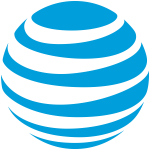DALLAS–(BUSINESS WIRE)–Jeff McElfresh, chief executive officer of AT&T Communications, spoke yesterday at the USTelecom Broadband Investment Forum. He discussed the country’s digital divide, touching on the following areas:

Current state of broadband: Since 1996, U.S. providers have invested nearly $2 trillion to build and operate advanced networks. And over the past 5 years (2015-2019), AT&T invested more than $125 billion in our U.S. wireless and wireline networks, including capital investments and acquisition of wireless spectrum and operations. It’s no coincidence that the U.S. led the world in 4G. And we’re now seeing a repeat performance for 5G, with 5G networks from 3 carriers already live. The benefits of all this investment and innovation are striking. Compared to 2015, industry broadband speeds are up 16% while costs are down 20%.
Digital Divide: But this good news doesn’t apply to every American. There is a deep gap separating those with and without broadband internet access. The latest FCC figures estimate that about 14.5 million Americans lack access to fixed broadband at speeds of at least 25/3 Mbps. This is the case even though broadband providers are rapidly pushing faster services into more and more areas. While some 98% of Americans in urban areas do have access to broadband networks, this is true for fewer than 80% of rural Americans. That 14.5 million figure only captures the issue of fixed broadband availability. It does not include consumers who rely entirely on their mobile phone for internet access. Still, availability is a major concern, as is affordability. The barrier to access for millions of other Americans is the cost of broadband service and equipment.
Lessons from COVID: Half of U.S. adults say the internet’s been “essential” during the pandemic. 60% of Americans have been able to work from home thanks to high-speed internet. 50 million students transitioned to remote learning. Yet some 17 million students remain effectively locked out of instruction because their families lack access to internet connectivity or adequate devices at home. This “homework gap” is the crisis within the COVID crisis.
Steps needed to close the digital divide:
- Urge Congress to fully fund the Broadband DATA Act.
- Revamp our universal service programs with direct appropriations from Congress.
- Let those who engineer and build broadband networks decide which technology delivers the best solution.
- Keep the light-touch regulatory approach that’s served our country so well.
That light-touch regulatory approach has encouraged sizable private investment in U.S. networks in the past and can in the future, as well. In that regard, McElfresh said AT&T intends to continue investing in its fiber infrastructure and may double the number of business, residential and wireless cell tower locations served with fiber over the next 5 years.
*About AT&T Communications
We help family, friends and neighbors connect in meaningful ways every day. From the first phone call 140+ years ago to mobile video streaming, we @ATT innovate to improve lives. AT&T Communications is part of AT&T Inc. (NYSE:T). For more information, please visit us at att.com.
Cautionary Language Concerning Forward-Looking Statements
Information set forth in this news release contains financial estimates and other forward-looking statements that are subject to risks and uncertainties, and actual results might differ materially. A discussion of factors that may affect future results is contained in AT&T’s filings with the Securities and Exchange Commission. AT&T disclaims any obligation to update and revise statements contained in this news release based on new information or otherwise.
This news release may contain certain non-GAAP financial measures. Reconciliations between the non-GAAP financial measures and the GAAP financial measures are available on the company’s website at https://investors.att.com.
Contacts
Fletcher Cook
AT&T
Phone: 214-912-8541
Email: fletcher.cook@att.com




